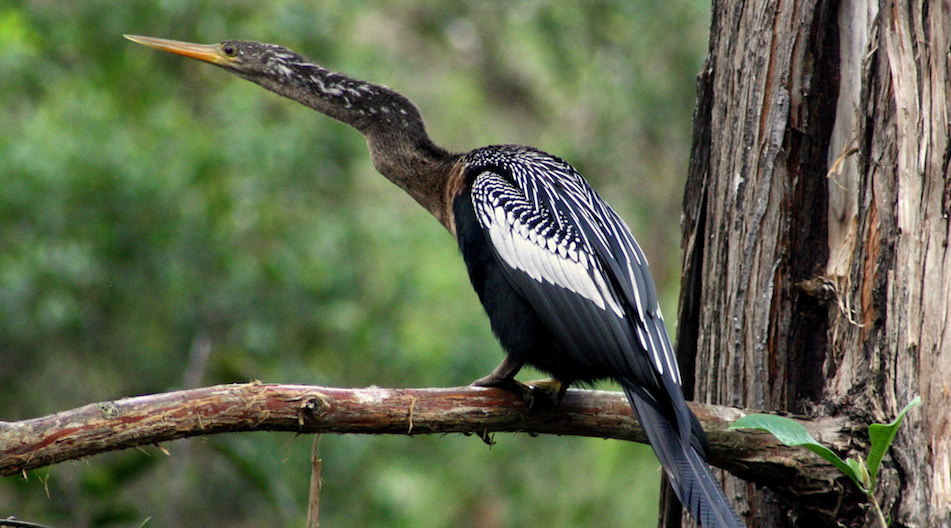- Climate Change Vulnerability Index
Climate Change Vulnerability Index (CCVI)

This climate vulnerability assessment is a spreadsheet-based process used for rapid assessments of plant and animal species. It identifies the relative vulnerability of species using information about species' natural history, distribution, and landscape conditions to predict whether it will likely suffer a range contraction and/or population reductions due to climate change.
This analysis includes 21 florida species of greatest conservation need according to the Florida Fish and Wildlife Conservation Commission and several non-native invasive species.
See overall vulnerability levels for:
You can also see specific vulnerability assessment results for the species included here on their profile pages.
Learn more about the CCVI methods and vulnerability levels.
Overall Results
Amphibians
Two out of the three amphibian species evaluated are Highly Vulnerable (gopher frog) or Extremely Vulnerable (reticulated flatwoods salamander). Moderate dispersal ability combined with specific hydrologic requirements often contribute to vulnerability to climate change for amphibians.
Reptiles
Four of the five reptile species evaluated are identified as Extremely Vulnerable to climate change, including diamondback terrapin, loggerhead sea turtle, Atlantic salt marsh snake, and American crocodile. The fifth species is Highly Vulnerable (Atlantic salt marsh snake). Most of these species occur in coastal habitats and are impacted by key factors such as sea level rise and anthropogenic barriers. Barriers may limit habitat migration in response to sea level rise as well as prevent species from tracking habitat shifts.
Birds
Birds are generally less vulnerable compared to the other species. Birds may have an advantage over other groups in that they have very good dispersal abilities. However, several of the species evaluated in this assessment had specific habitat requirements that may limit the degree to which these species may be able to shift their range. Potentially incompatible human responses to climate change, such as coastal armoring, have a significant role in increased vulnerability for some bird species, due to the potential to greatly reduce availability of suitable nesting habitat.
Mammals
Mammals that restricted to the Florida Keys are more vulnerable than the other mammals included in this analysis. These include the Lower Keys marsh rabbit (Extremely Vulnerable) and the Key deer (Highly Vulnerable). Many of the other mammals have relatively high dispersal ability and may be more able to migrate in response to climate related changes. The Florida panther's habitat is assumed not to be vulnerable to climate change, leading to a Not Vulnerable/Presumed Stable rank.
Invertebrates
The broad diversity of Florida’s 15,000 plus invertebrate species lends itself to a wide range of vulnerabilities to climate change. Invertebrates that inhabit areas highly susceptible to sea level rise and changes in water chemistry, as well as those with high levels of sensitivity or specialization to their habitat are the most vulnerable. One of the two invertebrates assessed, the salt marsh skipper, is in this category: it is highly specialized to salt marsh plants predicted to be significantly impacted by sea level rise. The other species assessed, is more protected from the immediate impacts of sea level rise within its inland sand pine habitat.
Methods
Species are evaluated by species experts using indicators of:
- exposure (6 indicators)
- sensitivity (13 indicators)
- response to climate change - optional (4 indicators)
These indicators capture information about a species' natural history, distribution, and landscape conditions. Scores for each species are developed based on expected impacts to factors such as diet, habitat, and dispersal ability in response to projected changes in precipitation, temperature and sea level rise.
The CCVI generates an index score that corresponds to one of five categorical ranks, which are used to identify the species that are most vulnerable to climate change:
- Extremely Vulnerable (EV): Abundance and/or range extent within geographical area assessed is extremely likely to substantially decrease or disappear by 2050
- Highly Vulnerable (HV): Abundance and/or range extent within geographical area assessed is likely to decrease significantly by 2050
- Moderately Vulnerable (MV): Abundance and/or range extent within geographical area assessed is likely to decrease by 2050
- Not Vulnerable/Presumed Stable (PS): Available evidence does not suggest that abundance and/or range extent within the geographical area assessed will change substantially by 2050, actual range boundaries may change
- Not Vulnerable/Increase Likely (IL): Available evidence suggests that abundance and/or range extent within geographical area assessed is likely to increase by 2050
Note: it is important to understand why a particular species is vulnerable in order to develop appropriate management responses.
See the full report for more details.




